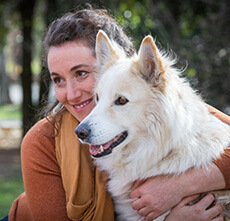Regulatory & Scientific Affairs Specialist and Veterinarian @Purina

|
|
Purina IngredientsGo to the section > |
What should I pay special attention to in pet food labels?
Pet food labels contain a lot of information. Knowing how to read them will help you to understand what is in your dog’s or cat’s food and why. Pet food labelling falls under EU legislation for animal feed. It doesn’t have its own set of rules nor does it fall under the rules for human food. You should pay special attention to the type of pet food (complete vs complementary) and feeding guidelines to make sure that your pet's getting the most from their diet.
• Type of pet food. First thing's first, when choosing pet food for your cat or dog, you'll need to understand the difference between complete and complementary pet food. When a pet food product is labelled complete, it means that it contains all the nutrients your pet needs daily. When you see 'complementary' on a label (e.g. on treats) this means that it should only be fed alongside other foods in order to provide the right nutritional balance. Apart from that, make sure that the food is appropriate for the life stage of your pet.
• Composition. The ingredients on pet food labels are listed in descending order by content weight. If you see chicken listed as the first ingredient, you’ll know your pet’s food has more chicken than any other ingredient on the list. Ingredients can be declared by categories defined by the regulation (e.g. meat and animal derivatives, cereals, minerals etc.) or by individual ingredients (eg: chicken liver, dehydrated carrots).
• Additives. Additives used in pet foods may include vitamins, flavourings, preservatives, antioxidants or colourants, among others. Only additives that have gone through a rigorous safety and efficacy evaluation and approved at EU level can be used in pet food.
• Analytical constituents. This shows nutritional analysis of your cat and dog food in terms of protein, fat, fibre and ash (ash refers to mineral content within the food). Products containing more than 14% moisture, will also declare the moisture level.
• Feeding guidelines. Pet food labels have feeding guidelines to help you determine how much and how often to feed your cat or dog each day. You may need to adjust the amount to maintain your pet’s ideal body condition based on age, activity level and size.